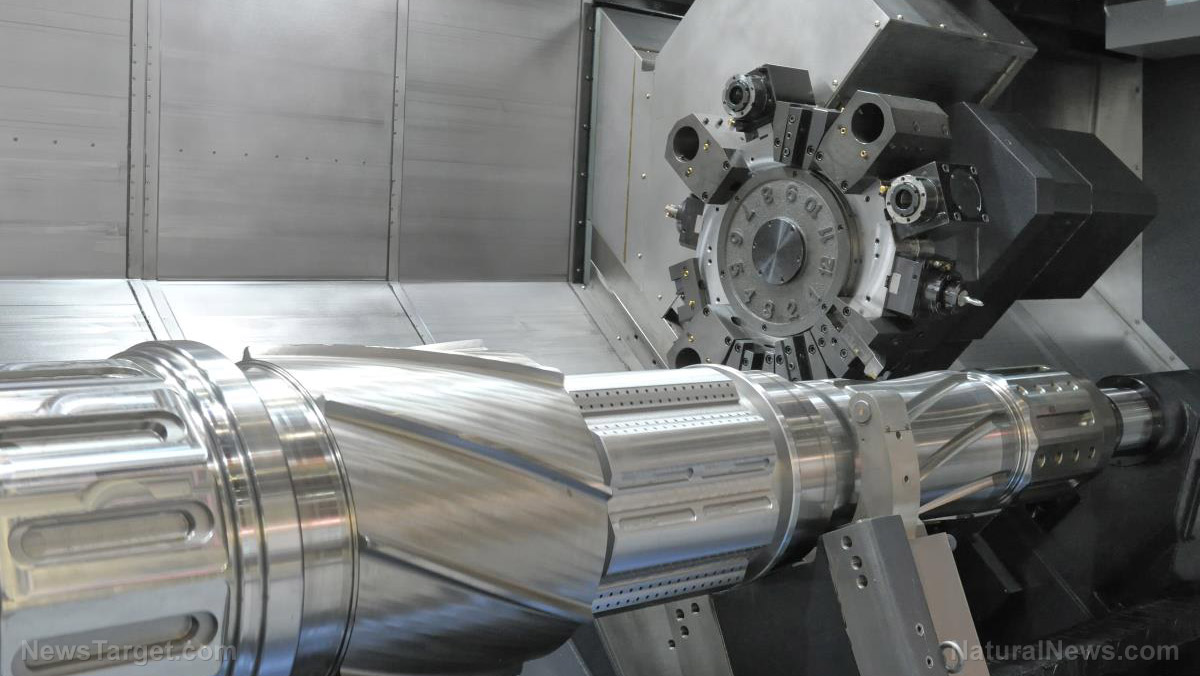
The new material is made out of nickel-based cellular materials as small as 17 nano-meters in diameter. These electroplated nickel nano-particles are strategically arranged in struts to maximize their load-bearing strength as a whole. This strategic arrangement of nickel makes the material four times stronger than bulk nickel plating. By tinkering with nano-meter-scale geometry, the inventors can increase the strength and density of the new material. This geometric arrangement of cellular materials is spatially organized and repeated to generate the new “Metallic wood” material. This geometric nano-meter engineering feat produces a very dense material, like that of wood. The inventors have even made the material as dense as water (1,000?kg/m3).
New nano-structured material stands up to real life manufacturing applications
Each 17 nano meter strut has a tensile strength as high as 8 GPa, an unprecedented measurement for something this small in size. Through compression testing, the inventors found that these nano-pillars can be reduced in diameter to increase the load bearing strength of the entire material. The problem that often occurs in developing new materials is scaling the material to meet real life applications. The macroscopic properties are just as important as the strength of the nano-pillars contained therein. The strength of the entire material can vary at different masses and shapes. For example, in nano-pillars made from nano-crystalline metals, there is an increase in strength at a certain mass, but a decrease in strength when the overall mass is reduced to the size of a grain.
In real-life application, this new “Metallic wood” does have enough mass to support various loads in industrial manufacturing and construction applications. The new material, although very light, has the density to stand up to real-life applications.
This new material is the first of its kind to multiply a nano-structured cellular material to develop a workable material for manufacturing, with a specific strength that is above 100 Mpa/(Mg/m3). Most nano-scale pillar materials lack the density needed to be used in all manufacturing applications.
The development of these nano-structures started with the fabrication of opal material, monodisperse polystyrene particles, and gold/chromium coated substrates. The polystyrene was stabilized at just the right temperature to increase the diameter between polystyrene spheres. This allowed the inventors to deposit nickel into the voids of the polystyrene structure. The interconnected spherical pores were oriented in a cubic formation. Additional nickel was added to increase the volume fraction of the nano-pillars, their diameter, and their mass.

Figure 1 image is taken from "High strength metallic wood from nanostructured nickel inverse opal materials" published in Scientific Reports volume 9, Article number: 719 (2019).
In figure 1 a) you can see the fabrication process for a unit cell of the nickel inverse opal material.
In (b–g) you can see a cross section of the nickel inverse opal material.
In (b,c) the inventors show a nickel inverse opal with no coating.
In (d,e) you can see a nickel inverse opal material with a 21?nm coating of additional electrodeposited nickel.
In (f) the inventors show a nickel inverse opal material with a 25?nm coating of additional electrodeposited rhenium-nickel.
In figure (g) you can get a closer image of one of the struts in (f).
In (h) you can see the final close-up of 2?cm2 nickel inverse opal material with 500?nm pores and 15?µm thickness grown on a gold/chromium coated glass slide.
Finally in (i), you can see a nickel inverse opal material with 300?nm pores grown on gold/chromium coated 20?µm thick polyimide.
To learn more about this new material, check out the abstract published in Nature.com Scientific Reports.
Also visit Science.News for more breakthrough discoveries.
Sources include:
Please contact us for more information.























